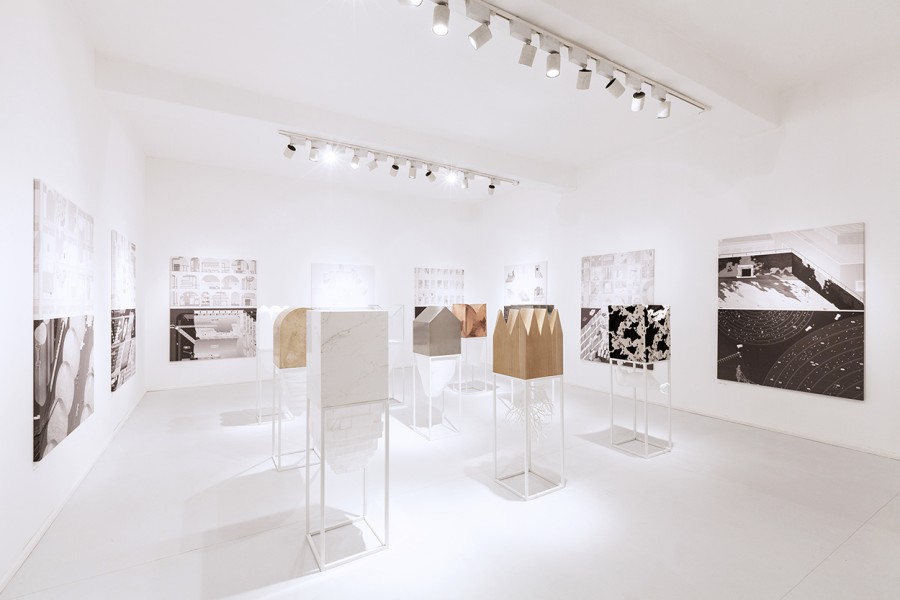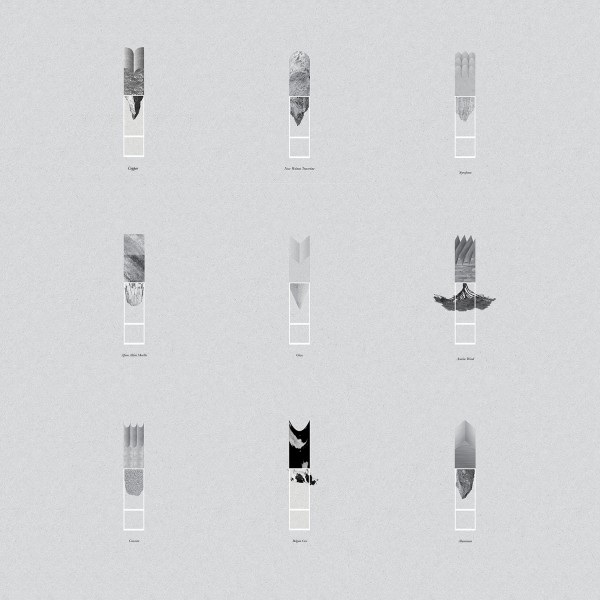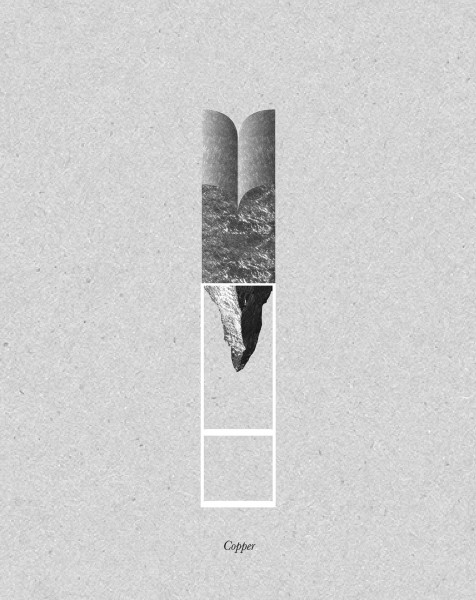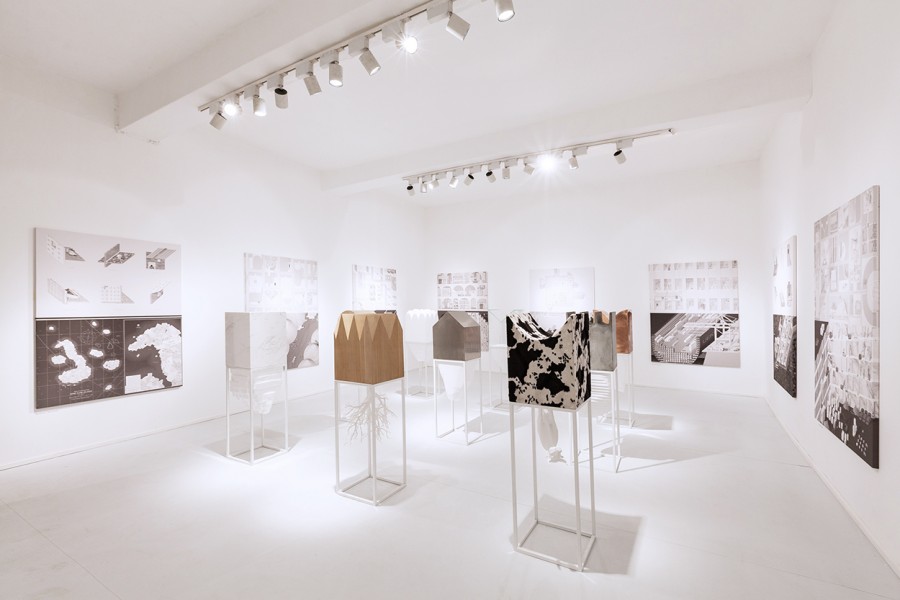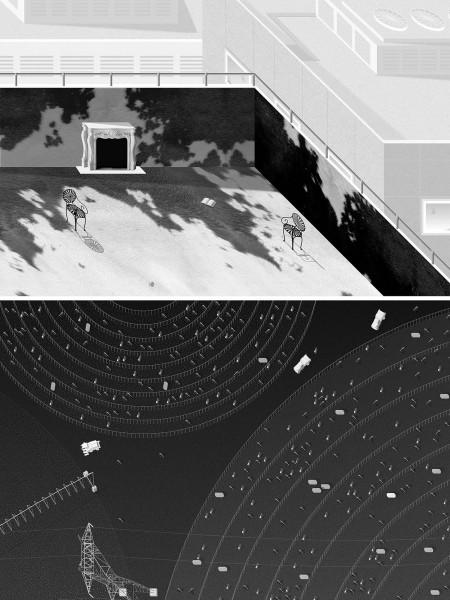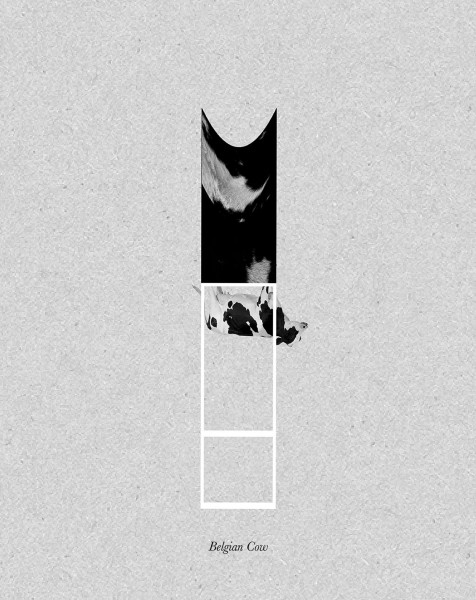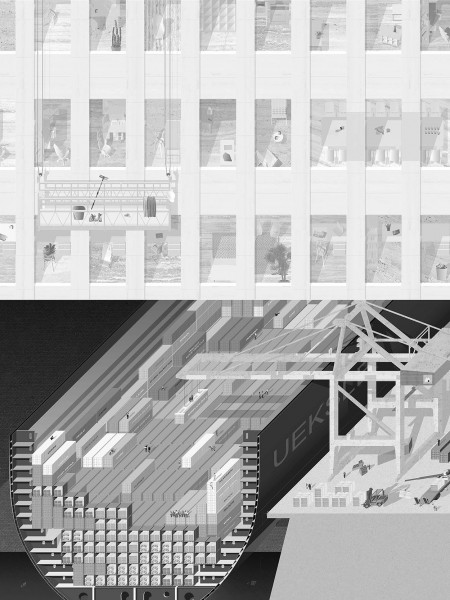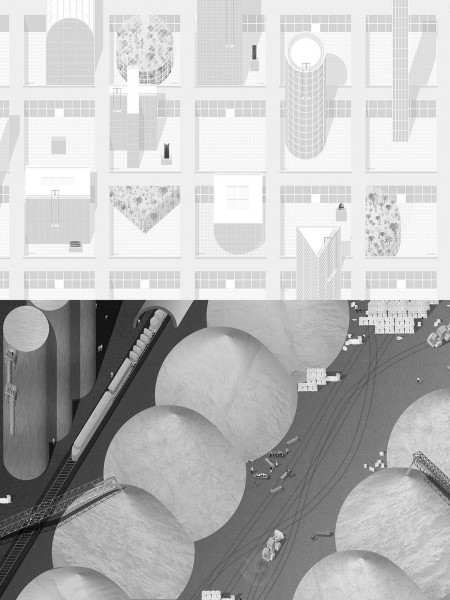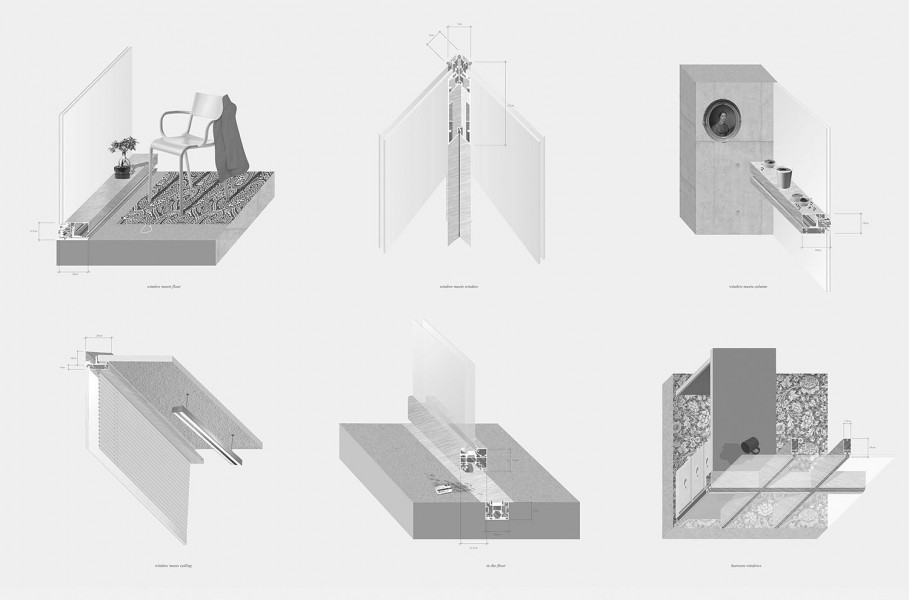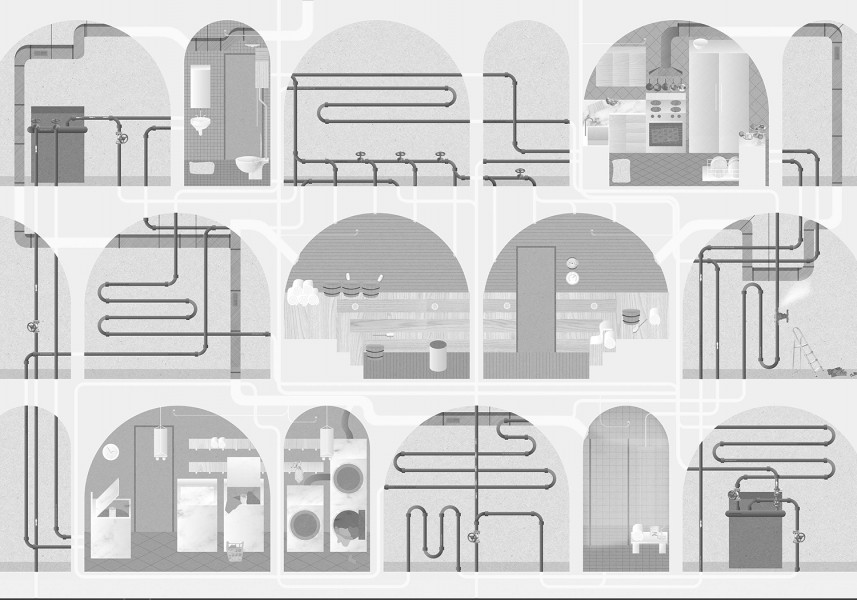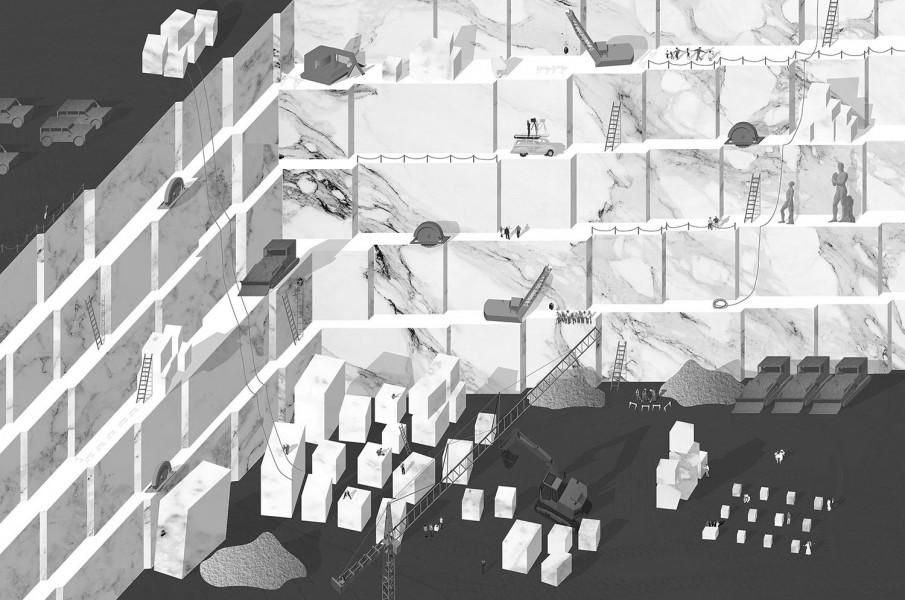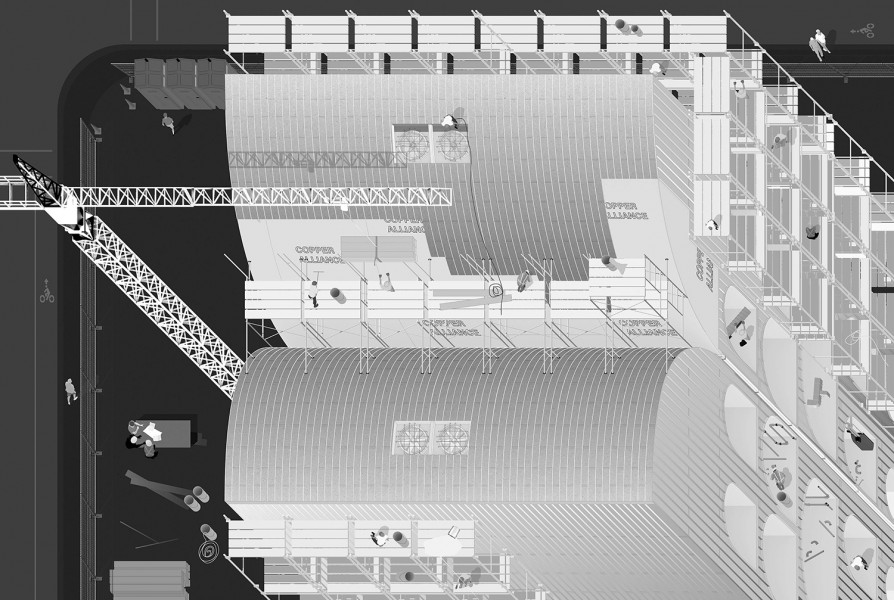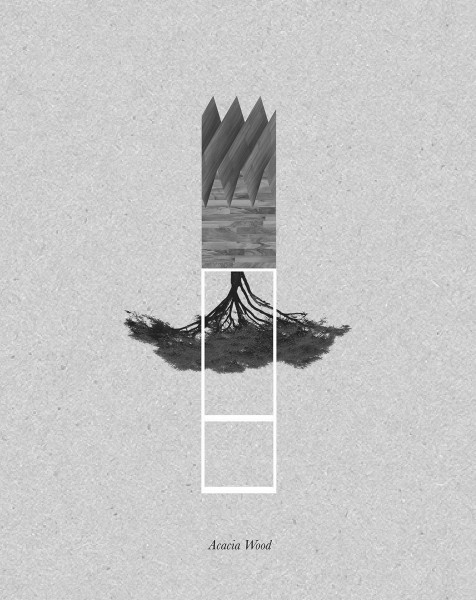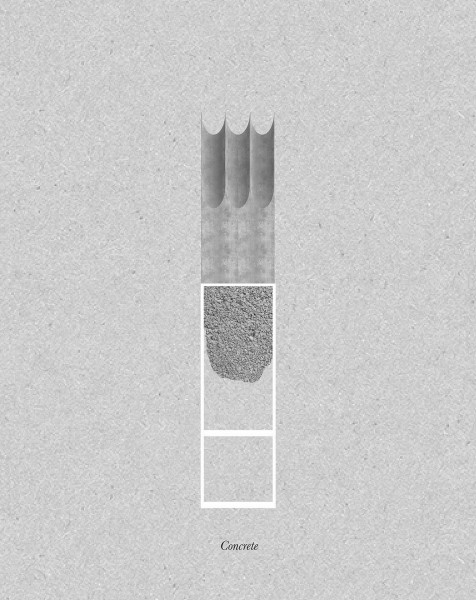Winner, FACULTY DESIGN AWARD, ACSA Architectural Education Awards 2019
Notable, BUILT ENVIRONMENT AWARD, Core77 Design Awards 2017
Year: 2016
Type: Exhibition/Installation (Built)
Venue: 3rd Istanbul Design Biennial "Are We Human?" Galata Greek School, Istanbul.
Project team: Neyran Turan, Mete Sonmez, Soo Ok Han, Daniel Haidermota, Darcy Spence, Betsy Clifton, Isabella Warren.
Production: Istanbul Foundation for Culture and Arts (IKSV) team, coordinated by Merve Yucel.
Biennial curated by Beatriz Colomina and Mark Wigley, with Evangelos Kotsioris.
Press Coverage/Reviews: Wallpaper* Magazine, Designboom, Icon Magazine, The Architects Newspaper, Volume Magazine
Strata of the world is a jumbled museum.
—Robert Smithson
Nine Islands examines the under-conceptualized long-span of architectural materiality. From the recalcitrance and the extraction of a particular raw matter from a specific geographic location, to its processing, transportation, and construction into a desired finished effect in a building and to its demolition, waste, and decomposition, the spatial and temporal span of architectural materiality is very wide (geographic) and deep (geological). The project showcases this long-span through nine case studies (nine islands) looking at particularly lavish or widely used nine building materials: certain types of marble, wood, glass, travertine, copper, aluminum, concrete, leather, and plastic.
The exhibition is comprised of nine 40X40X140cm models and nine 180X135cm drawings. The upper part of each model consists of a "Monument," an archetypical building mass that is finished with a specific material. As an opposition to the upper part, the lower part of each model consists of a "Rock," a formless landmass from which the raw matter is extracted (quarry for the marble, tree for the wood, cows for the leather, etc.).
In the exhibition, each drawing is printed and stretched on a canvas, blurring the distinction between a drawing and a painting. Each drawing is divided into two parts where each part depicts two different snapshots from the long-span of one of the nine materials. While the upper part of each drawing positions one building material through a particular architectural lens (elevation, section, plan, specification, detail), the lower part depicts a daily life scene from the wider life span of the same material (extraction at the quarry, shipping at the container port, demolition of the building ruin, roofing at the construction site, etc.). As the upper drawings depict architectural spaces or specifications as still-lifes with human traces without their actual presence, the lower drawings showcase over-populated human activity and presence in the extraction, production, transportation, construction, demolition or waste site.
In an era where humans are described as geological agents, architecture is both a background and a measure against which the world might be read. Like architecture then, Nine Islands represents the world back to itself.
Photo credits:
Image-1 and -4: Photo by Sahir Uğur Eren.
